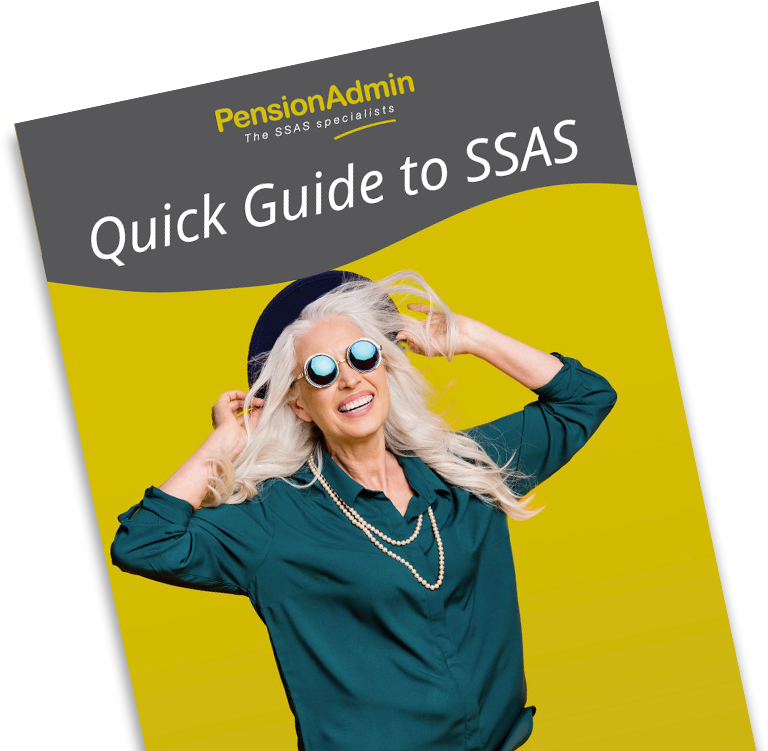What is a Scheme Administrator?
Every SSAS must have a scheme administrator and this person is appointed to be responsible for complying with the functions and responsibilities of a scheme administrator under the Finance Act 2004.

So, what is a SSAS scheme administrator?
Every SSAS must have a “scheme administrator” and this person is appointed to be responsible for complying with the functions and responsibilities of a scheme administrator under the Finance Act 2004.
These functions and responsibilities include:
- Telling HMRC about events that have happened under the scheme
- Making returns to HMRC – the annual return is an example which is similar to a tax return
- Telling the members mandatory information for example, what retirement benefits they are receiving and what the value of their scheme is
- The worst one…paying certain tax charges!
If a SSAS does not have a scheme administrator or the administrator acts improperly, HMRC may deregister it. This basically means that the SSAS loses its tax privileges and would be paying a large nasty tax penalty as consequence!
More about Scheme Administrators
Our clients always have lots of questions about scheme administrators and their role, so we’ve gathered together some of the most common questions.
Can anyone be a scheme administrator?
In theory. Yes, but would you want just “anyone” to do this role for you? We would suggest your answer to that question be…no.
Let us give you a bit of “why and when” to explain the reasons why.
The pension’s rules changed in 2006 and before this time, a professional trustee was mandatory. This trustee was responsible for making sure the scheme towed the line of numerous rules and regulations.
In 2006, the role of “professional trustee” was removed and the role was soon replaced by the scheme administrator role. SSAS’s no longer had to have a mandatory professional body to look after them.
That meant that anyone could be a scheme administrator, whether that had any pensions/tax/financial services experience. The result of that change was “pension liberation”.
Lots of money was scammed out of pension schemes and a lot of people were robbed of their pension savings.
In the aftermath, HMRC took steps to stop this and introduced the “fit and proper” test.
What is the fit and proper test?
Factors that may lead HMRC to deciding that the scheme administrator is not a fit and proper person include the following:
- does not have sufficient working knowledge of the pensions and pensions tax legislation to be fully aware and capable of assuming the significant duties and liabilities of the scheme administrator, or does not employ an advisor with this knowledge;
- has previously been involved in pension liberation;
- has previously been the scheme administrator of, or otherwise involved with, a pension scheme which has been de-registered by HMRC;
- has been involved in tax fraud, abuse of tax repayment systems or other fraudulent behaviour including misrepresentation and/or identity theft;
- has a criminal conviction relating to finance, corporate bodies or dishonesty;
- has been the subject of adverse civil proceedings relating to finance, corporate bodies or dishonesty/misconduct;
- has participated in or been connected with designing and/or marketing tax avoidance schemes;
- employs as an advisor a person who has been involved in pension liberation or tax avoidance;
- has been removed from acting as a trustee of a pension scheme by the Pensions Regulator or a Court, or has otherwise seriously contravened the pensions regulatory system, or the regulatory system of any other professional/governmental regulatory body; and/or
- has been disqualified from acting as a company director or are bankrupt.
As you can see, the scheme administrator role is important and should only be done by someone who has an extensive knowledge of pensions. A few SSAS administration companies won’t act in this role and they pass the role onto a scheme member who, unbeknown to them, has just signed up for a world of responsibilities for the whole scheme and the worst….potential tax fines on them personally!
If I am acting as scheme administrator, what tax charges could I be liable for?
The SSAS can’t do certain things (as outlined by HMRC) and a good scheme administrator will guide members through the legislation advising them what they can and can’t do. For example, Joe wanted to take some money out of the pension scheme to buy himself a new car and PensionAdmin told him this was absolutely not allowed as he was only 50 years old and in good health. Joe wasn’t bothered and did it anyway –Joe has now made an “unauthorised payment”. Translated, that is doing something that is not allowed which is now subject to a tax penalty.
This has ugly tax charges and straight away, Joe is going to be penalised 40% of the amount he has taken by HMRC. That is called the “unauthorised payment charge”.
There is also the “scheme surcharge” which is another penalty applied by HMRC and this is charged if the amount of the unauthorised payment reaches over 25% of the value of Joe’s pension scheme over a time of 12 months. Let’s assume this isn’t the case for Joe but if it was, he would also have to pay this charge.
Lastly, it’s the “scheme sanction charge” and this is payable by the scheme administrator. This charge is between 15% and 40% of the amount Joe has taken and the amount charged depends on whether or not the unauthorised payments charge has been paid.
Hopefully, you can now see where we are going with this.
There are a number of issues; firstly, if the member’s current administrator has appointed them as scheme administrator, they are now aware that they are liable for tax charges – even if it isn’t them that has made the unauthorised payment. This is a real problem in that sometimes, the person who took the unauthorised payment is NOT the scheme administrator.
Secondly, if the schemes administration company has told the members that they can do something and it turns out they cannot (this is very common), the scheme administrator is liable for the penalty of that mistake.
If you go back to the “anyone can be a scheme administrator ” question, you can now see why we suggest your answer to that question be “no”.
How does PensionAdmin do it?
We act as both scheme administrator and professional trustee so we act as a trustee alongside scheme members. As co signatory to the SSAS assets, we offer the scheme and its member’s protection from unauthorised payments and the charges that come with them. Some other administration firms may say “we do not act as professional trustee to give the members true flexibility to do as they please” but they will also not act as scheme administrator. So in reality, they are giving advice to members on what to do with their SSAS with no liability whatsoever.
Do I need a professional trustee or scheme admin?
We are seeing that more and more financial institutions will no longer place investments or open bank accounts for SSAS’s that do not have a professional trustee or scheme administrator. Barclays Stockbrokers and Cater Allen Private Bank are amongst these companies. Their stance on the matter is that they may become liable for aiding “unauthorised payments” by releasing funds that may not be used for the purpose of the pension scheme whereas a professional trustee and scheme administrator would not allow this.

Ask us a question
If you have a question about pensions, ask us. Fill in the boxes below, hit “send it” and we will come back to you.

Download our free SSAS guide
If you are interested in learning a bit more about SSASs, please download our free SSAS guide here
